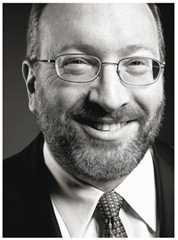 The 'D' word has started to rear its ugly head. Greg Zuckerman at the Wall Street Journal recently reported that some of world's leading investors (Bill Gross, Jeremy Grantham, and David Tepper) are becoming worried about deflation and re-shaping their portfolios to prepare for a possible period of falling prices. Even though value investors don’t invest based on macro forecasts, it is a grave mistake to totally ignore the macro environment, especially by the experts at PIMCO.
The 'D' word has started to rear its ugly head. Greg Zuckerman at the Wall Street Journal recently reported that some of world's leading investors (Bill Gross, Jeremy Grantham, and David Tepper) are becoming worried about deflation and re-shaping their portfolios to prepare for a possible period of falling prices. Even though value investors don’t invest based on macro forecasts, it is a grave mistake to totally ignore the macro environment, especially by the experts at PIMCO.
I am not a macro economist or have any forecasting abilities. I have zero opinion on whether the environment will be inflationary or deflationary going forward, but in this article, I highlight points by notable investors, Seth Klarman at Baupost Group and Steven Romnick at FPA Crescent, that value investors need to be cognizant about on how to protect against a possible deflation when selecting individual securities.
Seth Klarman points to the complexity and variability of business valuation in various macro environments in his rare and out-of-print book that sells for $2000 on Amazon, ‘Margin of Safety, Risk-Averse Investing for the Thoughtful Investor’. Here is what he has to say about assessing business value in a deflationary environment:
“In a deflationary environment assets tend to decline in value. Buying a dollar’s worth of assets for fifty cents may not be a bargain if the asset value is dropping. Historically, investors have found attractive opportunities in companies with substantial “hidden assets”, such as an overfunded pension fund, real estate carried on the balance sheet below market value, or a profitable finance subsidiary that could be sold at a significant gain. Amidst, a broad-based decline in business and asset-values, however, some hidden assets become less valuable and in some cases may become hidden liabilities. A decline in the stock market will reduce the value of pension assets; previously overfunded plans may become underfunded. Real estate, carried on companies’ balance sheets at historical cost may no longer be; and undervalued subsidiaries that were once hidden jewels may lose their luster.”
“The possibility of sustained decreases in business value is a dagger at the heart of value investing (and is not a barrel of laughs for other investing approaches either). Value investors place great faith in the principle of assessing value and then buying at a discount. If value is subject to considerable erosion, then how large a discount is sufficient? Should investors worry about the possibility that business value may decline? Absolutely.”
He recommends three responses to protect against the degradation of asset values in a deflation.
“First, since investors cannot predict when values will rise or fall, valuation should always be performed conservatively, giving considerable weight to worst-case liquidation value as well as to other methods. Second, investors fearing deflation could demand a greater than usual discount between price and underlying value in order to make new investments or to hold current positions. This means that normally selective investors would probably let even more pitches than usual go by. Finally, the prospect of asset deflation places a heightened importance on the time frame of investments and on the presence of a catalyst for the realization of underlying value. In a deflationary environment, if you cannot tell whether or when you will realize underlying value, you may not want to get involved at all.”
Further, in his recent lecture at the Ben Graham Center for Value Investing, he gives a specific example of how to evaluate asset values to protect against a “depression-type” environment:
“We have looked at the debt of auto finance companies. They are captive and their equity does not trade. Right now (2008-2009) the default rates on auto loans have not gone up much. These companies are running an annual loss rate of 2%-4%. That is less than the default rates on houses in many markets and less than high credit card defaults. We don’t have a very good reason for why its so but we suspect it is because (i) very few loans are subprime, (ii) people have a tendency to hold onto their cars if they paid into their loan for a few years, (iii) it is (currently) hard to get new car loans, people don’t have the money, so they don’t let go off their old cars easily, (iv) and, if one has to get to job, they need the car to drive to the job. So, we have reasons to believe that car loans will continue to perform, but we are modeling it to get worse from here on. We ask ourselves what would be a really bad scenario – a base case scenario is for the annual car loan loss rate to quadruple. So, what would happen if it quadruples. The bonds we are buying are fifty cents on a dollar will be still worth ninety to par. Now lets assume that the loan losses go up eight fold, which is armageddon. We would have 40% loss rate over the life of a car loan, 40% loss over the life of a lease, 40% loss on the new cars sitting in dealer showrooms, all of which these companies lend to, but our bonds are still worth sixty to par compared to a our purchase price of fifty. I don’t know how many things you can buy that are worth 20% more than the purchase price even in an armageddon and this is the closest to armageddon we can get. There is no historical precedent to anything close to that ever happening.”
“That is how we are modeling everything. When we look at home residential properties in a housing market that has corrected massively, we assume 20% down in 2009 and 2010 and 10% down in 2011. That will get you down to home price levels in California to 1979 prices, and way past any affordability metric, and will get to mid to high-teens current yields on renting. When you can buy mortgage securities to earn a high return to that assumption, that is the kind of armageddon scenario that makes us excited about investing. You cannot apply that kind of stress test to any bank and buy it. Every bank in the country would be wiped out in those scenarios, though I don’t think it will happen. But, that is the degree of comfort we like and we think we can get in this market, and still buy things to yield high returns.”
Further on, Seth comments on how requiring a larger than usual margin-of-safety causes him to sit on the sidelines in such an environment until it meets his standards of “cheapness”:
“Consider Las Vegas casinos or Hilton hotels. Revenues are down 20% year-over-year. What makes investing in these businesses difficult is that it is hard to tell if revenue are going to be flat one year from now, or if the revenue will be up 15-20%, or worse, if the revenue will drop another 15-20%. When you have that kind of wild disparity, you need to buy to a deteriorating scenario and still get a good return. Its much harder to make those assumptions in certain businesses than in others. Will the volume in Kleenex go down 20% from here on. No, it wont. But, could the revenue at a gambling casino go down another 20%. They could because people don’t have to be at a gambling casino if they don’t want to. So, we try to be really careful, and sometimes its just easy for us to say that we don’t really have an opinion on what may happen. There are other opportunities we could look at, and we’ll just pass on this one.”
Steven Romnick at FPA Crescent commented at the recent quarterly conference call on the large-cap stocks that are considered to be very cheap by many investors -Jeremy Grantham and Bill Miller to name a few.
“Why is the fund sitting on cash instead of investing in high quality large cap stocks that are cheap and have relatively high yields?”
To this, Mr. Romnick responded that the large caps are cheap relative to their historical 10 year averages, but assume that these companies can continue to maintain their margins going forward. This may not be true in a higher than usual inflationary environment or in my opinion a deflationary environment. Cash can be more useful in the future when markets are under distress than to be fully invested in these high quality large caps.
I have looked at the large caps in the past (PG, JNJ, Pfizer, Walmart) and own a long position in Coca Cola and Pepsi, but I do not have an opinion yet on how these companies are priced to various margin compression scenarios. I plan to revisit my position and the other large caps to stress-test for these scenarios.
In conclusion, the important point of this article is that value investors should test individual securities when they are under examination for various stress-case scenarios (like inflationary and deflationary environment, higher than usual margin compression, higher than usual revenue drops etc), and buy only when there is acceptable return to these scenarios. Beware that buying securities by simply looking at historical 10-year data may lead to regret later.
Resources:
- PIMCO August 1, 2010, "Privates Eye”, William Gross
- WSJ August 1, 2010, “Big Investors Fear Deflation”, Gregory Zukerman
- March 17, 2009, Seth Klarman, Ben Graham Center for Value Investing.
- July 29, 2010, Quarterly Briefing, FPA Crescent.
Disclosure: The author has his family invested in FPA Crescent. The author has a long position in KO and PEP.






